On Aug. 25, 1973, about halfway through their planned 59-day mission, the Skylab 3 crew of Commander Alan L. Bean, Pilot Jack R. Lousma, and Science Pilot Owen K. Garriott broke the then 28-day record for the longest spaceflight set by the Skylab 2 crew in June 1973. After overcoming leaky thrusters with their spacecraft...
On Aug. 25, 1973, about halfway through their planned 59-day mission, the Skylab 3 crew of Commander Alan L. Bean, Pilot Jack R. Lousma, and Science Pilot Owen K. Garriott broke the then 28-day record for the longest spaceflight set by the Skylab 2 crew in June 1973. After overcoming leaky thrusters with their spacecraft, then bouts of space motion sickness, during a record-setting spacewalk they accomplished their first major task by deploying a second sunshade to help cool the space station, damaged at launch. Additional thruster leaks nearly forced NASA to implement a rescue mission, but once they resolved that issue, Bean, Lousma, and Garriott settled into their mission, accomplishing more research than originally planned. They conducted two more spacewalks before preparing to return to Earth.
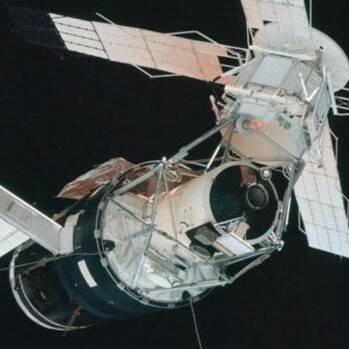
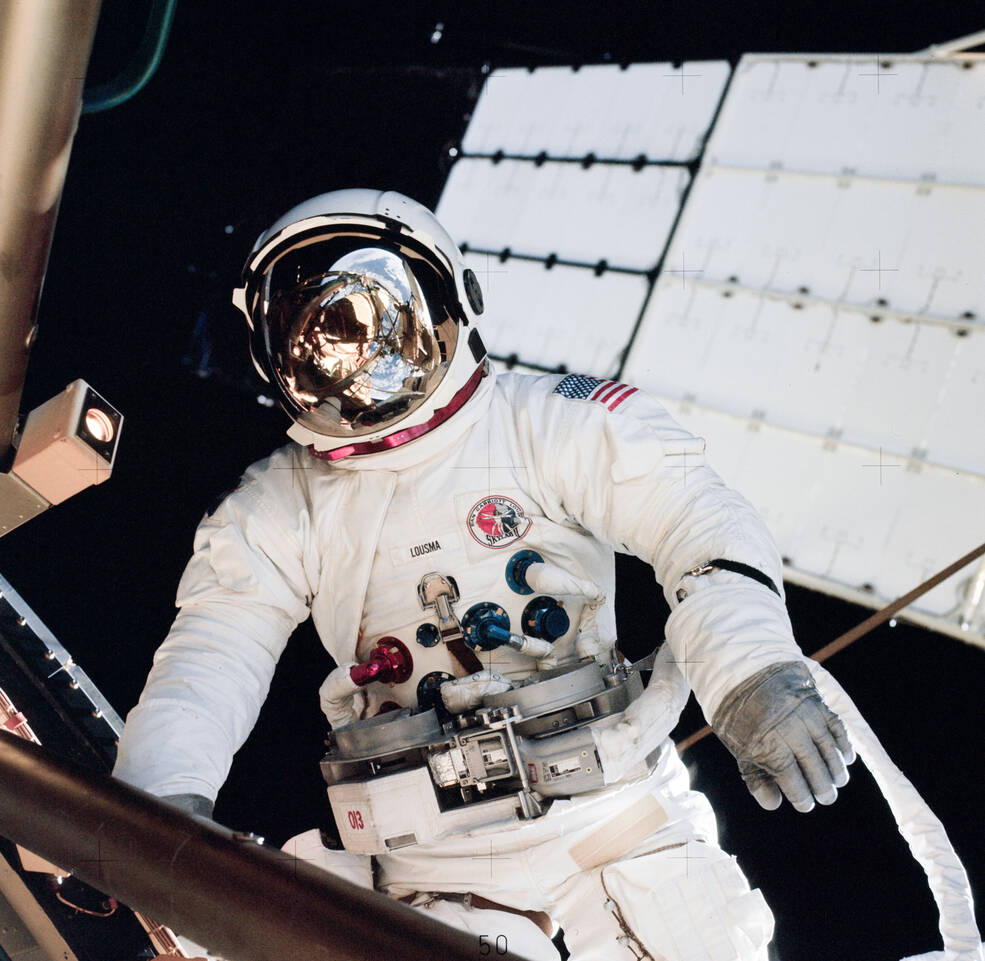
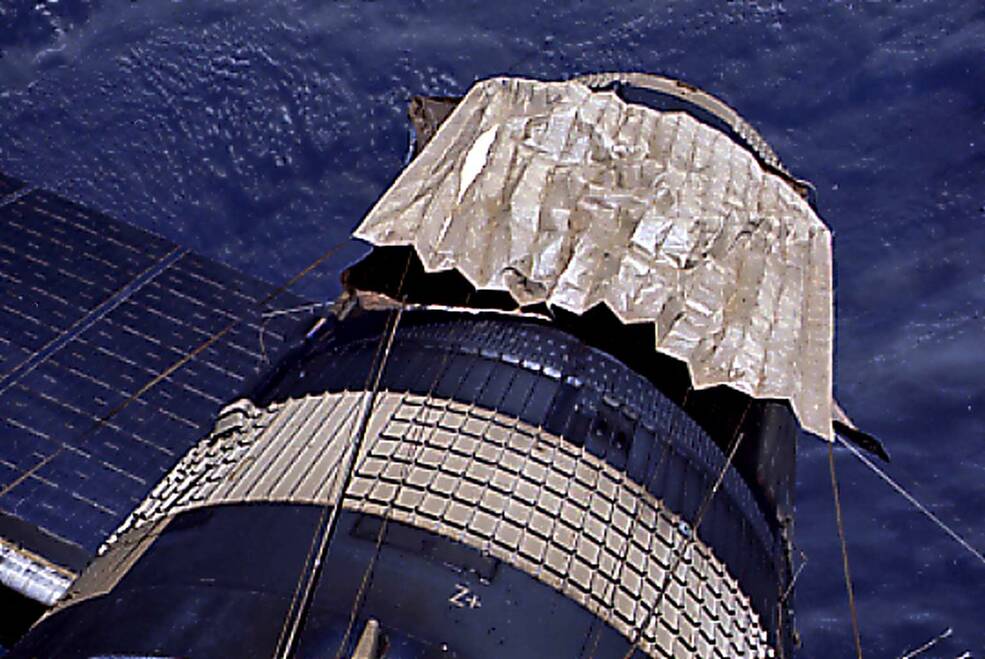 Left: Skylab during inspection fly-around, with the second docking port, used for a rescue mission, clearly visible. Middle: Skylab 3 astronaut Jack R. Lousma during the twin-pole sunshade deploy spacewalk. Right: The sunshade deployed over the station, covering the original parasol.
Left: Skylab during inspection fly-around, with the second docking port, used for a rescue mission, clearly visible. Middle: Skylab 3 astronaut Jack R. Lousma during the twin-pole sunshade deploy spacewalk. Right: The sunshade deployed over the station, covering the original parasol.
From the time they reached orbit following launch on July 28, the astronauts’ first few days proved eventful. During the rendezvous with Skylab, one of the four clusters or quads of thrusters on their spacecraft began to leak. The thrusters, located at 90-degree intervals around the Service Module (SM), provided attitude control during rendezvous maneuvers. Mission Control instructed them to shut off the leaky quad, and they completed the rendezvous, inspection fly-around, and docking using only the three working quads, a scenario they never practiced before the mission. For the first time, a space station received a second crew. Shortly after their move into the space station, however, all three crewmembers experienced symptoms of space motion sickness, causing them to fall behind their timelines. Managers delayed the first planned spacewalk by a week to give them time to recover. In the meantime, a second set of SM thrusters began to leak, and the crew quickly shut that quad down. With mission managers concerned that with only half its thrusters operating, the SM may not be able to safely return the crew to Earth, they began preparations for a possible rescue mission, enabled by Skylab’s second docking port. They accelerated preparations for the next spacecraft and rocket, planned for use by the Skylab 4 crew, rolling the vehicle to Launch Pad 39B on Aug. 14 to enable a launch by early September. In a rescue scenario, astronauts Vance D. Brand and Don L. Lind would fly to Skylab and dock at its lateral docking port and return home with Bean, Lousma, and Garriott in a Command Module modified with the addition of two extra crew couches to accommodate five crew members. In the end, managers decided that the Skylab 3 crew could use workaround procedures that Brand and Lind developed in ground simulators to return home safely with only half the thrusters working, and called off the rescue attempt. Recovered from their space motion sickness and the leaky thrusters no longer a threat to their mission, Bean, Lousma, and Garriott settled down to the primary tasks of their mission. On Aug. 6, during a 6-hour 31-minute spacewalk, the longest Earth-orbital spacewalk up to that time, Garriott and Lousma installed the new sunshade to cool the station and replaced film canisters in the Apollo Telescope Mount (ATM).
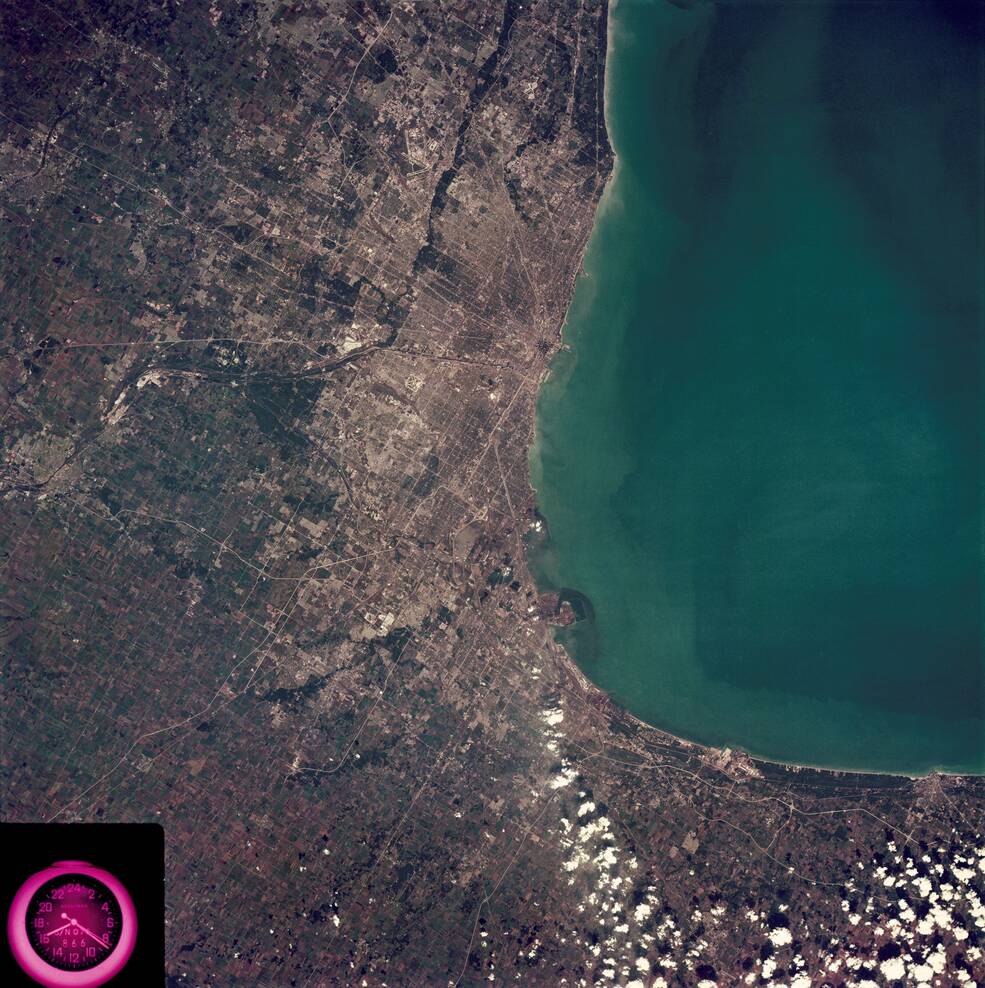
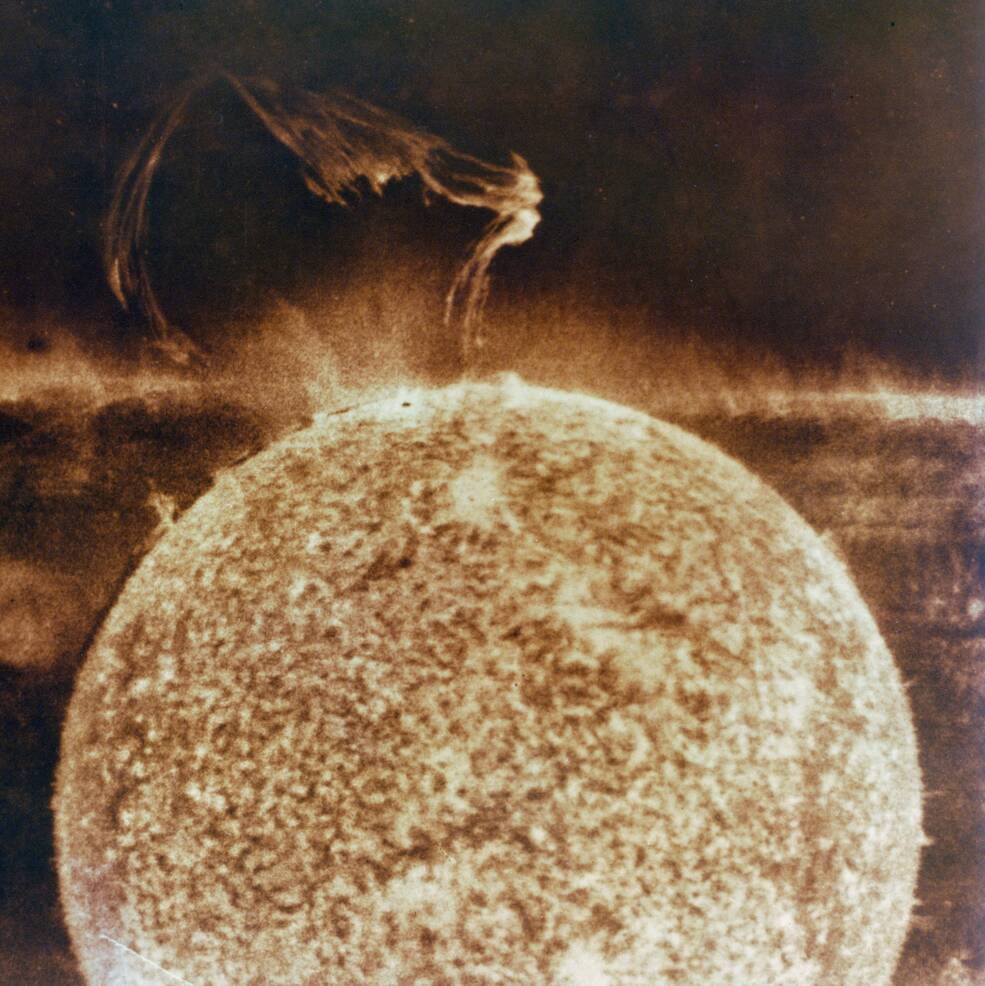
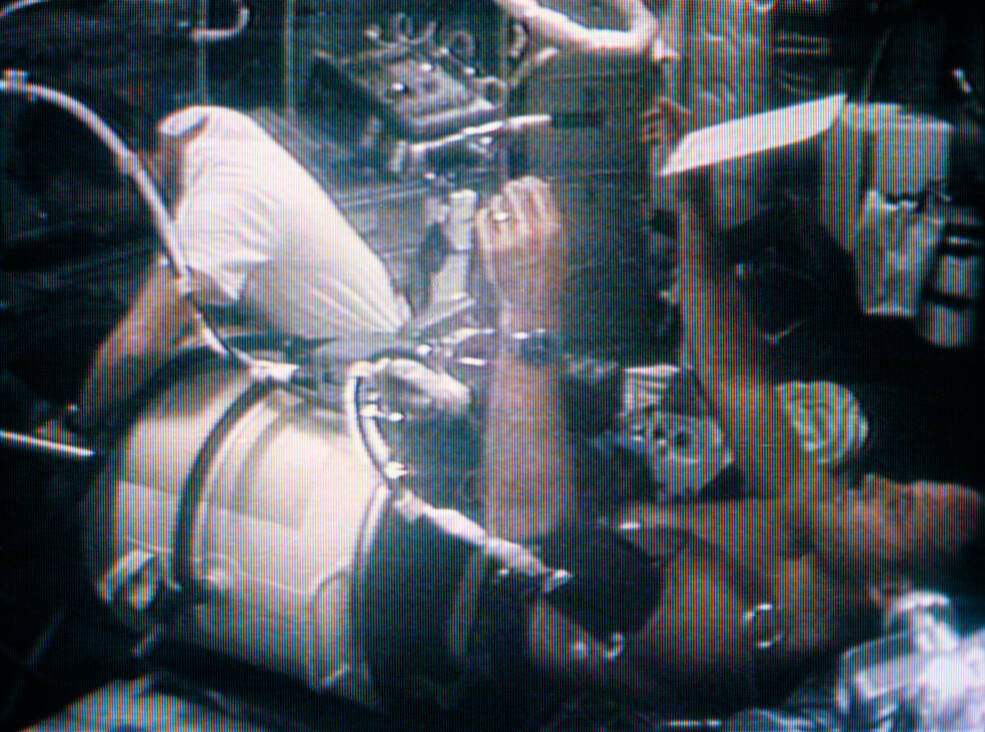 Left: Image of Chicago from the Earth Resources Experiment Package set of remote sensing instruments. Middle: A large solar flare imaged by an Apollo Telescope Mount instrument. Right: Skylab 3 astronaut Jack R. Lousma, right, participates in a Lower Body Negative Pressure experiment to monitor changes in his cardiovascular system, as Owen K. Garriott acts as an operator.
Left: Image of Chicago from the Earth Resources Experiment Package set of remote sensing instruments. Middle: A large solar flare imaged by an Apollo Telescope Mount instrument. Right: Skylab 3 astronaut Jack R. Lousma, right, participates in a Lower Body Negative Pressure experiment to monitor changes in his cardiovascular system, as Owen K. Garriott acts as an operator.
The Skylab 3 astronauts not only began work on a variety of science and technology experiments, they also learned how to live in space. Their biomedical investigations focused on understanding their physiological responses to long-duration space flight, including changes to their cardiovascular, neurovestibular and musculoskeletal systems and their overall metabolism and nutrition. The crew members completed more than the expected number of observations of selected ground sites using multispectral instruments in the Earth Resources Experiment Package (EREP) and exceeded planned solar and astronomy observations with the ATM. As a technology demonstration, the crew practiced flying the Astronaut Maneuvering Unit (AMU) inside the spacious dome of the Orbital Workshop. The AMU demonstrated the technology of the Manned Maneuvering Unit, a jetpack-like device allowing an astronaut to freely operate outside a spacecraft and used in the space shuttle program in the 1980s during satellite servicing missions. Two minnows, 50 minnow fish eggs, six pocket mice, 720 fruit fly pupae, and two spiders served as subjects for scientific studies. The spiders, named Arabella and Anita, flew as a student experiment to study the ability of arachnids to weave webs in weightlessness. To more effectively counteract the effects of long-duration spaceflight, the second crew spent more time exercising while onboard, a lesson learned from the first crew’s experience. On Aug. 24, Garriott and Lousma conducted a second spacewalk , this one lasting 4 hours 31 minutes, to replace ATM film canisters and install a 24-foot cable for a new set of rate moment gyroscopes they mounted inside the station. The third and final spacewalk, with Bean and Garriott stepping outside, took place just 3 days before the crew’s return to Earth.
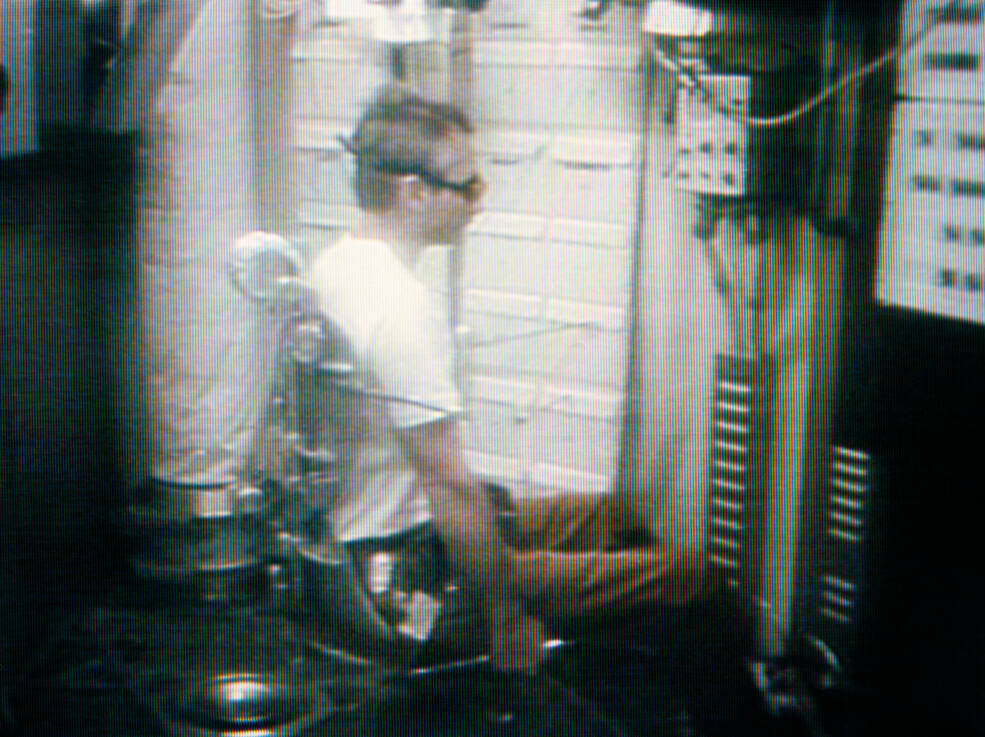
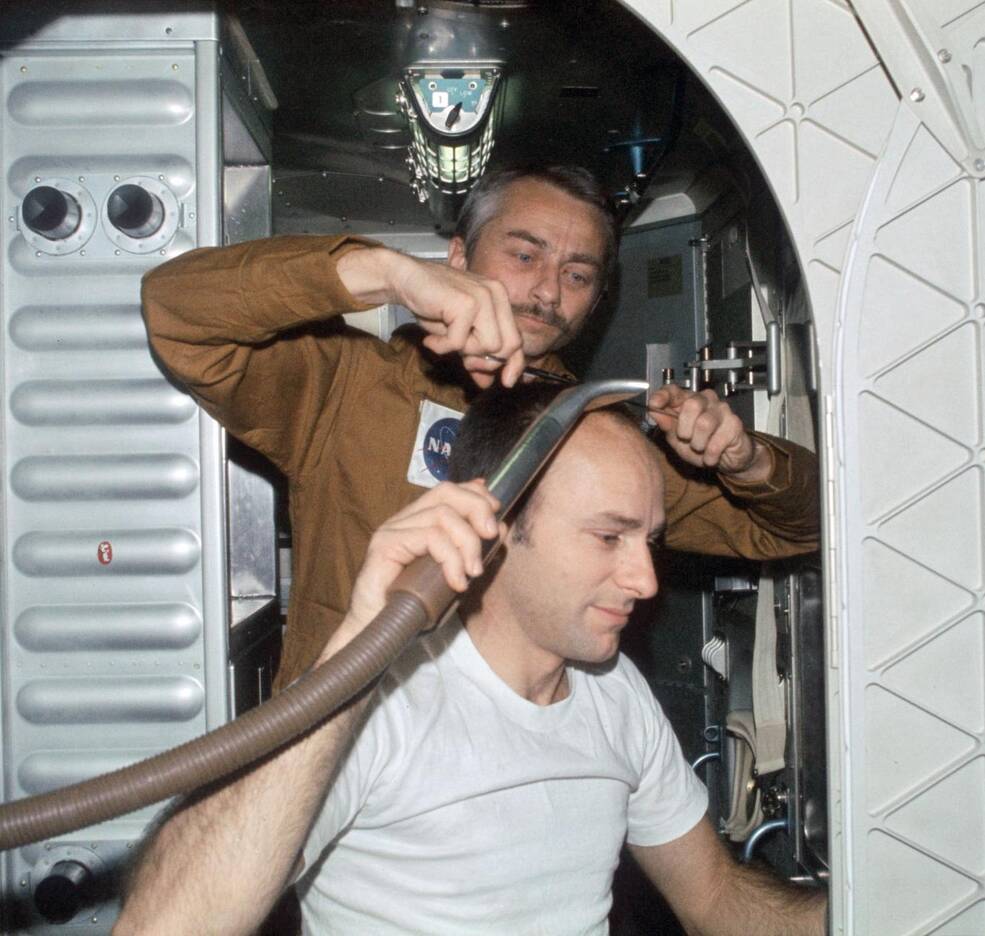
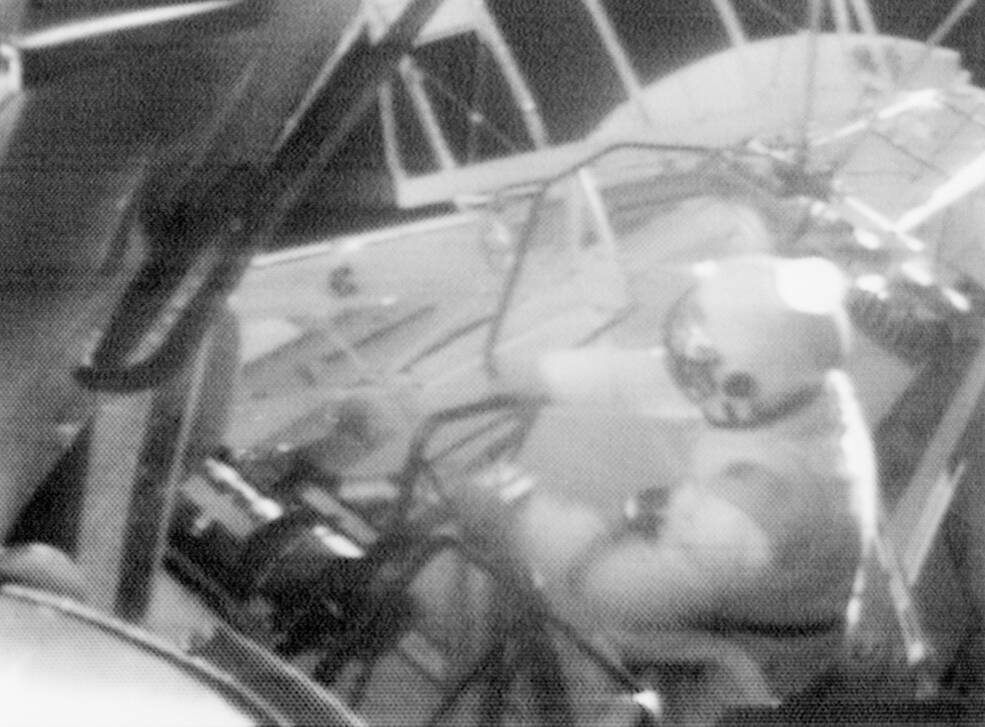 Left: Skylab 3 astronaut Owen K. Garriott participates in a vestibular experiment using the station’s rotating chair. Middle: Garriott gives Alan L. Bean a haircut. Right: Jack R. Lousma during the Aug. 24, 1973, spacewalk to install cables for a gyroscope package.
Left: Skylab 3 astronaut Owen K. Garriott participates in a vestibular experiment using the station’s rotating chair. Middle: Garriott gives Alan L. Bean a haircut. Right: Jack R. Lousma during the Aug. 24, 1973, spacewalk to install cables for a gyroscope package.
On Aug. 25, Bean, Lousma, and Garriott surpassed Skylab 2’s 28-day record for the longest human space flight. A team of medical specialists and mission managers cleared them to continue with their mission beyond 28 days, with weekly reviews and approvals to continue until the end of the flight. On Aug. 27, the Skylab 3 crew sent a message to the ground as part of the formal dedication ceremony for the newly renamed Lyndon B. Johnson Space Center, formerly the Manned Spacecraft Center. NASA Administrator James C. Fletcher read the message at the ceremony in which the astronauts paid tribute to the 35th President, stating that their work aboard Skylab would not have been possible except for his “strong support and leadership in the Senate and in the presidency.”
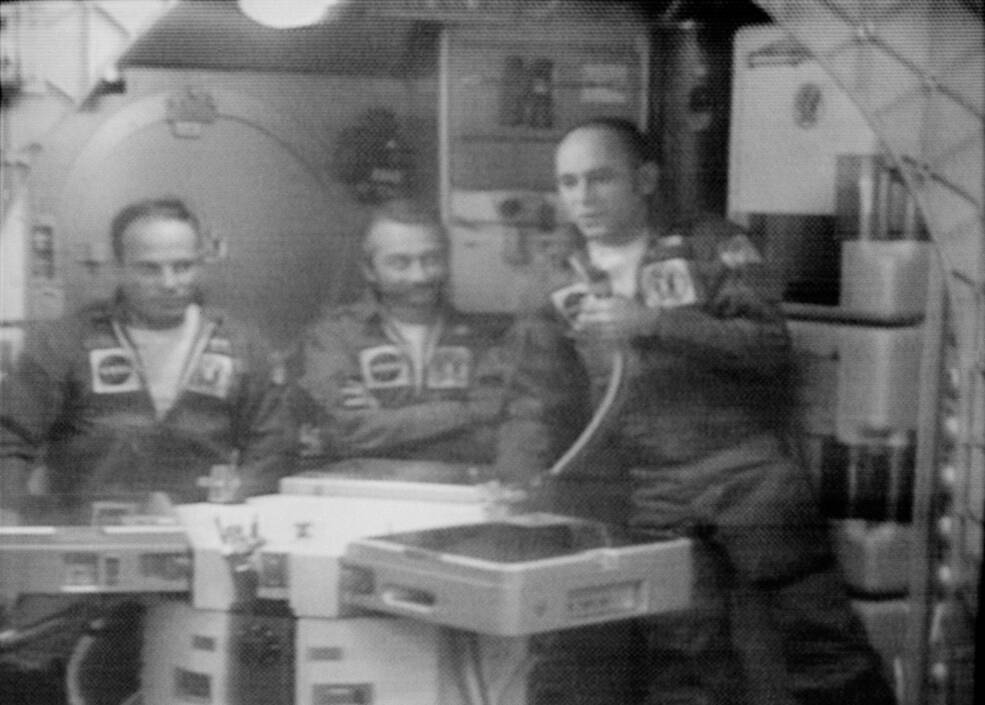
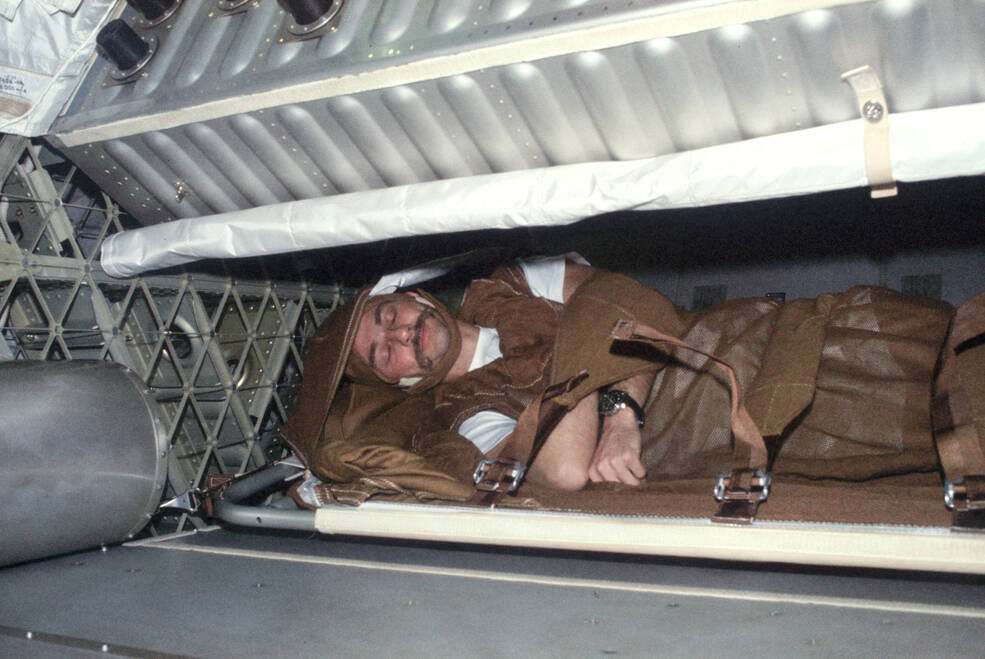
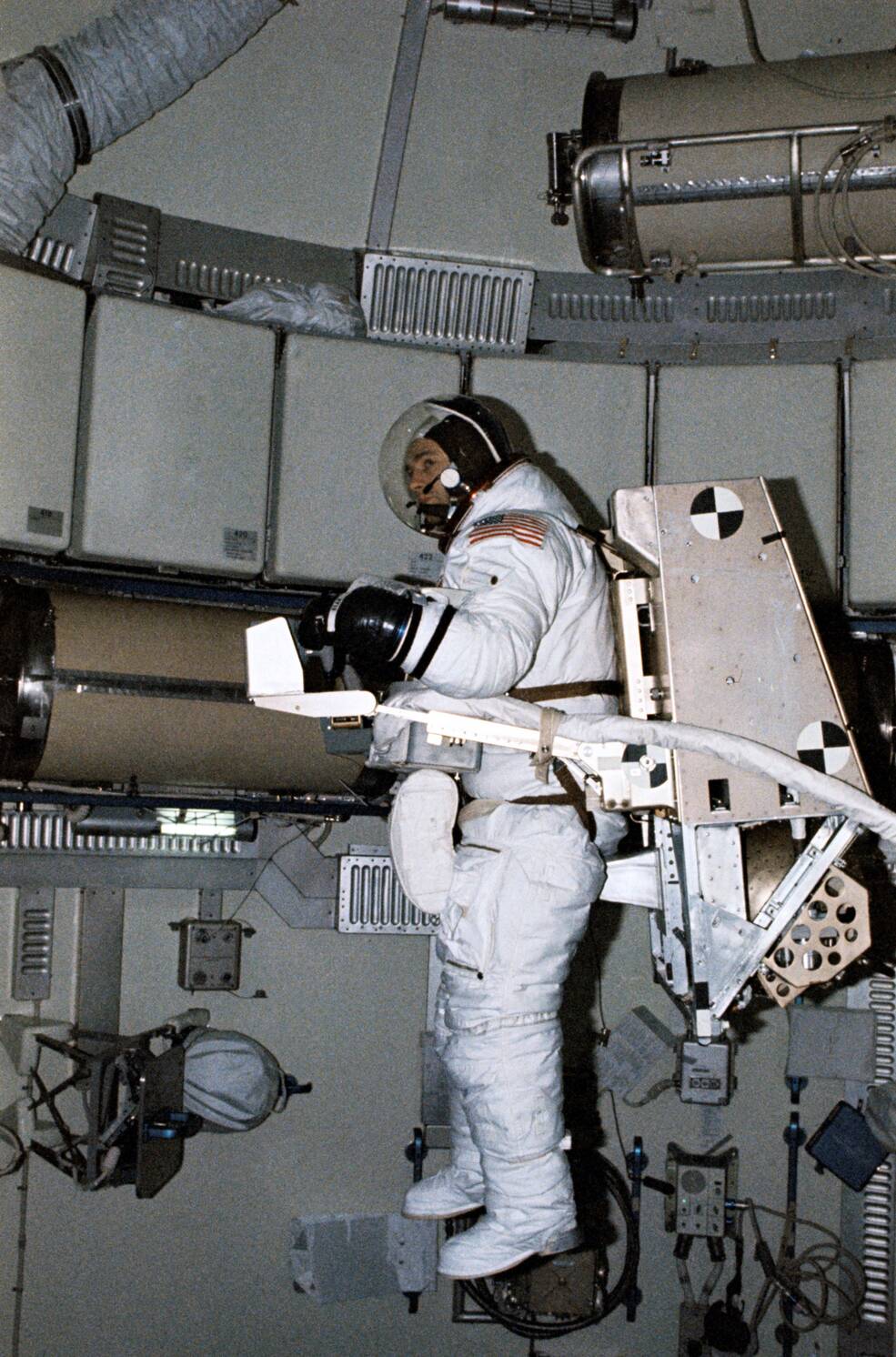 Left: Skylab 3 astronauts Jack R. Lousma, left, Owen K. Garriott, and Alan L. Bean answer questions during an inflight press conference. Middle: Garriott performs a sleep study experiment. Right: Bean flies the Astronaut Maneuvering Unit.
Left: Skylab 3 astronauts Jack R. Lousma, left, Owen K. Garriott, and Alan L. Bean answer questions during an inflight press conference. Middle: Garriott performs a sleep study experiment. Right: Bean flies the Astronaut Maneuvering Unit.
Things were going so smoothly that on Sep. 10 Garriott played a practical joke he planned ahead of time. Before the mission, he asked his wife Helen to tape record some dialogue, interspersed with seconds of silence, so when Bean played it on the space-to-ground loop it would sound like a conversation with the capsule communicator, or capcom, the astronaut in Mission Control who talks directly with the crew. Under the pretense that she came up to Skylab to deliver a home cooked meal to the crew, she “chatted” with capcom Robert L. Crippen, a willing participant in the joke. Helen even recorded some comments about fires in California, not uncommon that time of year, to make the conversation appear more realistic. The rest of flight control team, unaware of how the trick had been arranged, didn’t hear the full story until 1998, when Garriott came clean during a Skylab 25-year reunion.
To be continued …
John Uri
NASA Johnson Space Center























